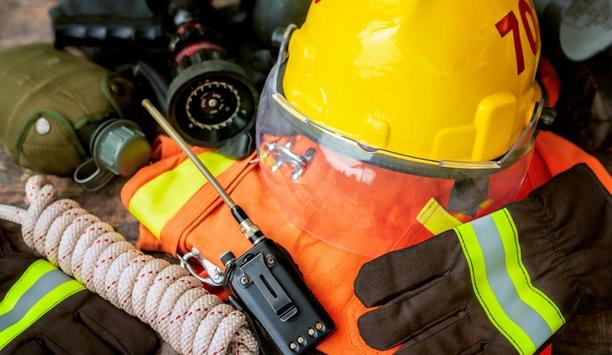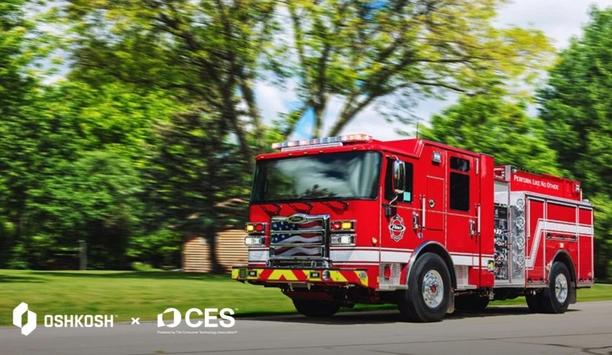False fire alarms have risen by nearly 30% in just five years at NHS trusts across England; stretching resources, unsettling patients, and disrupting vital healthcare.
Figures from NHS Digital reveal there were 21,635 false fire alarms at NHS trusts throughout 2019/20 marking a decade high – several trusts recorded upwards of 500 false alarms.
Unnecessary evacuation
The worrying results reveal that both in the past year and historically, several patients have sustained ‘injuries during evacuation’, highlighting the damaging effects of an unnecessary evacuation.
At a time where it is vital to avoid the crowded corridors and large gatherings at assembly points that follow an evacuation, it has become even more pertinent to eradicate the causes of false alarms ensuring a socially distanced environment for vulnerable patients.
Unnecessary risk to safety
False alarms expose the public and fire crews to unnecessary risks in their emergency response
Of the 21,635 false alarms 6,523 resulted in a callout, firefighters respond to all alarms as if they are real. This exposes the public and fire crews to unnecessary risk in their emergency response to unwanted fire signals, directing them away from real emergencies – threatening to place added pressure on the NHS.
Across the 224 NHS trusts listed within the data, a total of 1,560 genuine fires were recorded.
False alarm
False alarms cost businesses and Fire and Rescue Service authorities an estimated £1 billion a year in the UK. To recoup this cost the London Fire Brigade became the first fire service in the country to recover costs from hospitals with a poor false alarm record.
A false alarm is a fire alarm signal caused by means other than a genuine fire, which has activated fire detection and alarm system, these can include: equipment false alarm, environmental influences, accidental damage, and inappropriate human action, including the malicious activation of a manual call point.
Using protection cover
As recommended in BS 5839-1:2017 manual call points can be fitted with a protective cover to prevent false fire alarms. The British Standard Institute recommends in section 20.2b), that: “All MCPs should be fitted with a protective cover, which is moved to gain access to the frangible elements.”
This is supported by fire safety guidelines set out by the Department of Health which outlines the importance of “initiating measures to reduce false alarms and unwanted fire signals,” such as “the provision of lift flaps, or lift flaps combined with a local alarm device [which] are sufficient to control the possibility of undesirable actuation by patients.”
Call Point Stopper
Call Point Stoppers are specifically designed to prevent false alarms whether accidental or malicious
Safety Technology International manufactures a range of protective covers, from integral covers to outdoor and sounder models; there are variations to suit all applications. These covers are specifically designed to prevent false alarms whether accidental or malicious.
The Call Point Stopper is a protective cover ideal for areas with a risk of accidental activation, such as hospitals and healthcare facilities. The polycarbonate cover does not restrict the legitimate operation of vulnerable call points and helps distinguish a fire call point from a green electronic door release – often located nearby, this is a common cause of false alarms.
Euro Stopper
Fire crews recently attended a false fire alarm at the Royal Blackburn Hospital after a discharged patient broke five break glass call points. If there is a history of malicious activations whereby patients or visitors intentionally activate the fire alarms, causing unwanted evacuations and disrupting important healthcare, the Euro Stopper offers a solution.
The Euro Stopper provides a tamper-proof cover featuring the same sturdy UV-stabilised polycarbonate housing as the Call Point Stopper with the useful addition of an optional integral sounder and glow-in-the-dark frame. The 96 dB sounder emits a piercing alarm when the cover is lifted drawing immediate attention to the area, acting as a pre-alarm in a real emergency.
Universal Stopper
If further robust protection is still required the Universal Stopper provides IP56 protection from the elements, with a tough outer dome or low profile cover strong enough to withstand the severest of knocks from hospital beds, trollies, or wheelchairs. An optional sounder and break seal acts as an additional deterrent against malicious activation.
Conforming up to IP66, the Enviro Stopper offers the same protection against both accidental and malicious activation whilst guarding against ingress in harsh environments, such as wet rooms or wash down areas.















